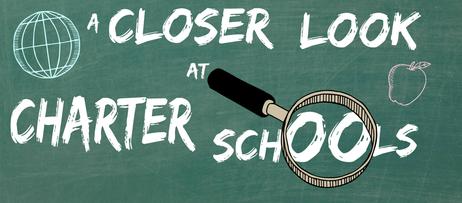President Obama’s Race to the Top education initiative strongly supports charter schools, but can these institutions save failing public school districts? While there are currently more than 4,700 charter schools in America, their track record is mixed. Some campuses have garnered tremendous accolades and accomplishments, while other charter schools are negatively impacted by financial management issues, spotty performance, and disruptive conflict with teachers' unions and districts.
Charter Schools: Campuses that Outperform
Charter schools can provide students with a medley of benefits that the traditional public school finds difficult to rival. Typically, charter schools have smaller classes, which foster discussion and allow teachers to spend more time with each student. Other schools have experimented with innovative teaching methods, including curriculum focused on AP coursework or even virtual learning. For example, as reported by the Washington Post, the students at the Basis Scottsdale Charter School in Arizona are required to take a minimum of six AP exams before their senior year.
While charter schools overall may have a mixed record of performance, research does demonstrate that the top charter schools outperform their traditional counterparts. As an MIT study reveals, after attending a Boston-area charter school for just one year, middle school students improved their academic performance by 15%. Another Stanford University study discovered that students attending New York City School District’s charter schools had a greater probability of closing performance gaps between themselves and their more affluent counterparts.
Other charter schools’ successes are clearly demonstrated by their matriculation statistics. For example, Houston’s YES Prep charter school is ranked amongst the country’s best public schools, as nearly all of their graduates continue onwards to pursue a college education.
Charter schools do not only benefit their own students. Interestingly, they can also raise the performance of an entire school district, especially in low-income and failing districts. Students attending a traditional school in a district with charter schools typically enjoy improved reading proficiency levels, according to the Manhattan Institute for Policy Research. In addition, when struggling students from a traditional public school transfer to a charter school, the remaining students typically experience growth in their academic performance. While there are many reasons that may fuel these benefits, increasing the competition for funding within each district can raise the performance waters for all the schools.
This video takes a look at the future of public schools.
Hurdles Facing Charter Schools
Unfortunately, not all charter schools share a shining record of achievement. Many charter schools are faced with mediocre test scores and low graduation rates. As a testament, out of Arizona’s 500 charter schools, only 25% can be classified as “high performing,” which is lower than the high-performance rating given to 33% of all of Arizona’s traditional public schools, as reported by the Washington Post.
In addition, charter schools face an uphill battle for funding. Without the ability to levy taxes, charter schools must rely completely on funding from public and private sources – which can be unstable. Charter schools often rent their campuses and buildings, which translates into higher operating costs. Couple the fluctuating funding with greater operating costs, and financially managing a charter school can prove difficult.
The financial mismanagement of charter schools can also prove to be the campuses’ undoing. For example, in the state of Arizona, four charter schools were revoked in the last two years – and three of these campuses were guilty of financial mismanagement.
Given the financial constraints of charter schools, many are unable to provide their students with resources found at traditional public schools, such as teaching those with special needs or juvenile delinquents.
The conflicts between charter schools and local public school districts can also weigh heavily on performance. Technically, charter schools operate outside the jurisdiction of school districts, which have been quick to show their disapproval of this independence. For example, the Philadelphia School District has been lobbying the City Council to create more regulations for charter schools, including stricter monitoring of grading systems and enrollment numbers, as reported by the Philadelphia Daily.
This video discusses charter schools and the future of public education.
The Future of Charter Schools: Will They Be at the Top?
While charter schools are certainly not infallible, both the local and federal governments have been supporting the growth of these alternative institutions. For example, according to the Austin American Statesman, high-performance charter schools are now being awarded funding from the Texas public school endowment, which was once reserved only for traditional public schools. In Massachusetts, legislators passed a bill that allowed for more charter schools in the state, as reported by the Boston Globe.
In addition, private organizations, such as the Bill and Melinda Gates Foundation, have expressed their support of charter schools, with the Gates Foundation donating $60 million to LA charter schools to improve teaching evaluation methodology, as reported by the Los Angeles Times.
This TEDTalk discusses charter schools and the future of public education.
Some of the change of heart in charter school support at the state legislative level has been fueled by the Obama Administration’s Race to the Top $4.35 billion grant. To qualify, states must reduce the limitations on charter schools, as well as improve teaching and student performance evaluation methods. Massachusetts, Delaware, and Illinois were amongst the first states to allow for a greater number of charter schools, and legislative initiatives in California and Tennessee are likely to follow suit.
Although charter schools have their share of disadvantages, their potential is certainly promising. With the expected growth of charter schools supported by the Race to the Top initiative, the future of charter schools shines brightly and may indeed prove to be a solution to failing public school districts.
Questions? Contact us on Facebook. @publicschoolreview













